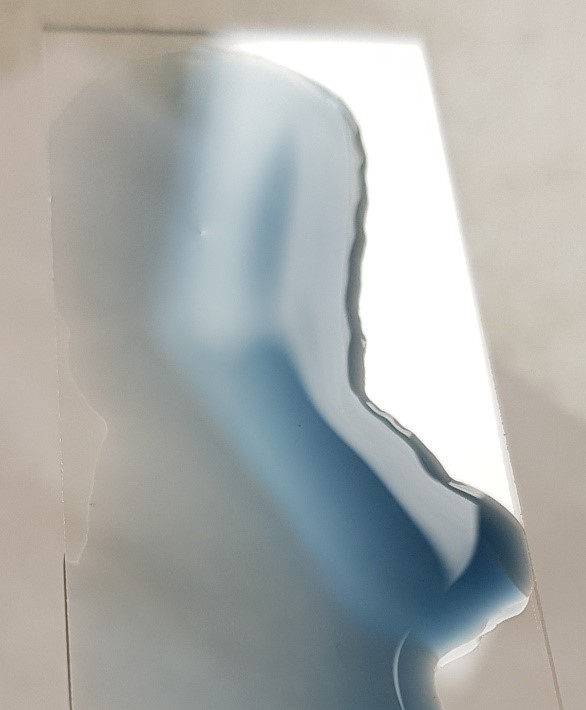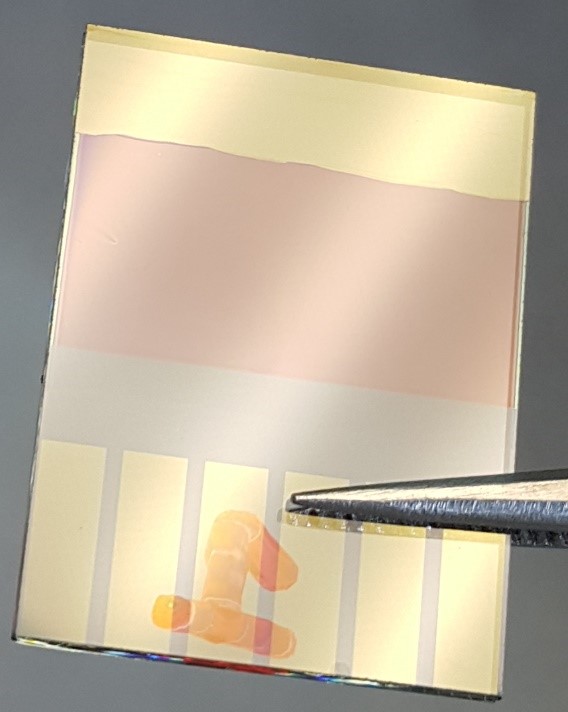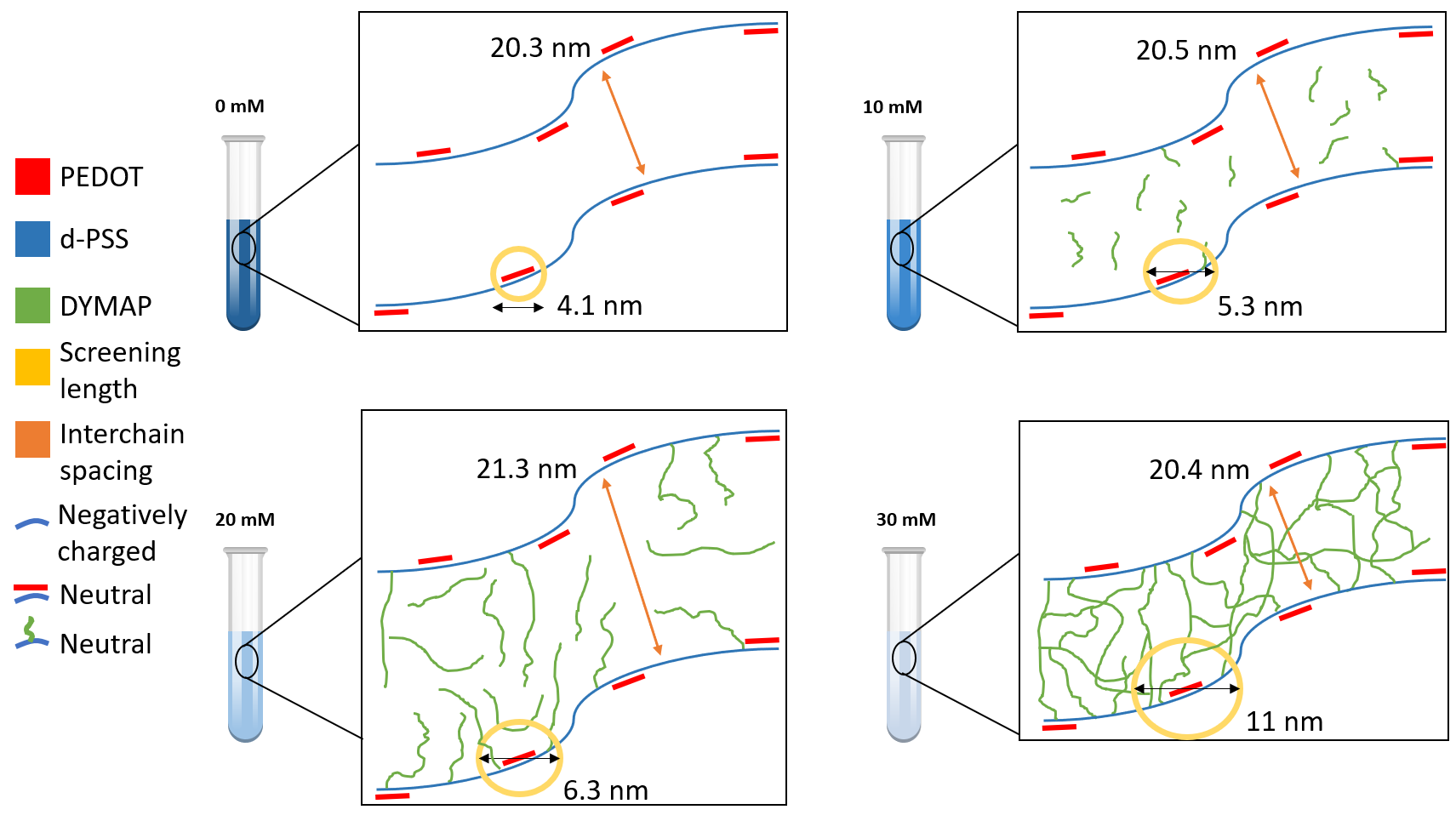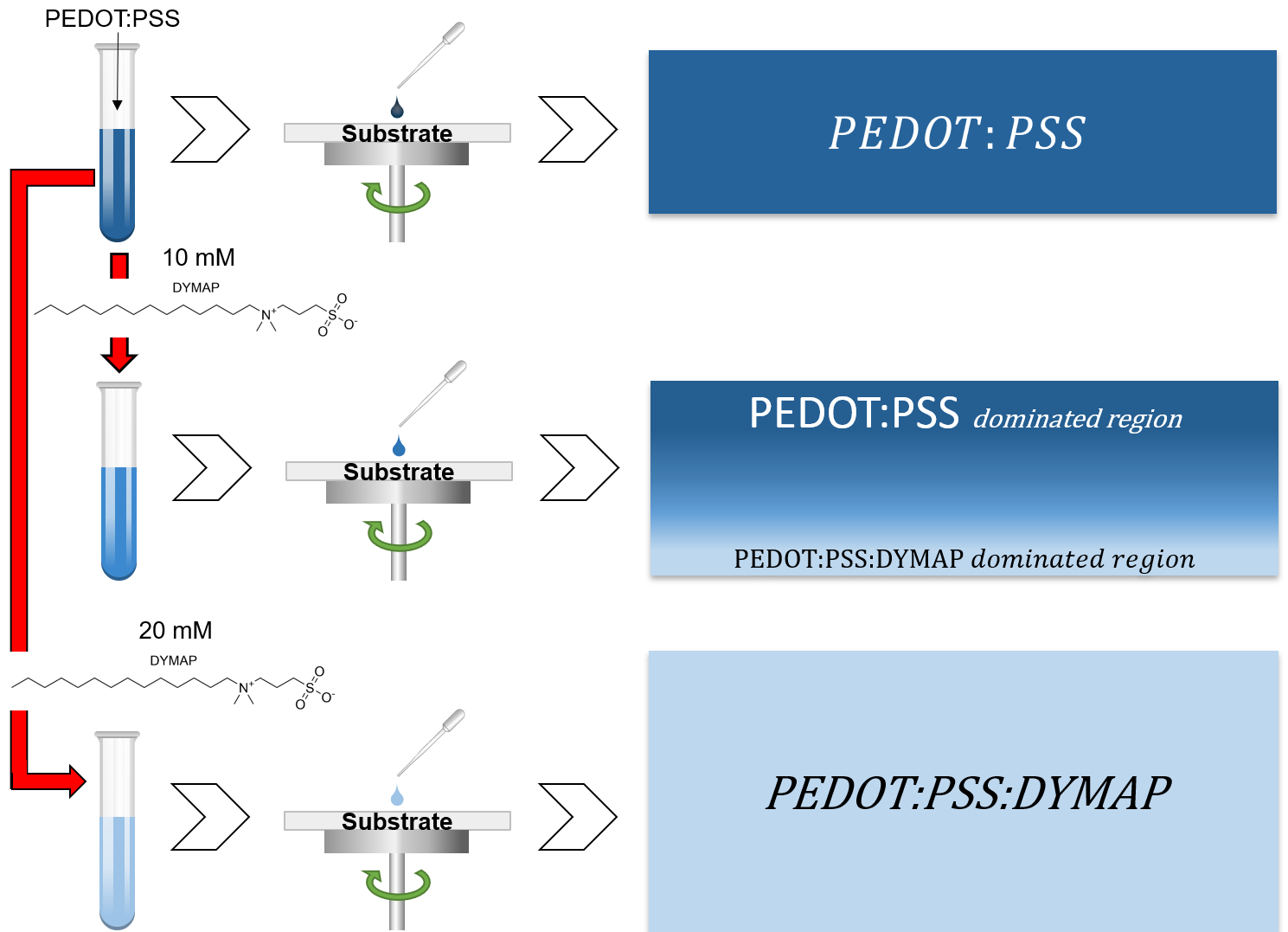A new generation of conducting materials
One of the defining milestones in the progress timeline of humanity is the intentional manipulation of the flow of electrons. From lightbulbs to the internet, control over the electron has allowed humanity to use technology to advance exponentially as a civilisation. A property of materials that is paramount to achieve this is the electrical conductivity, which indicates how easily electrons flow through the atomic structure of materials.
Conducting polymers are a new discovery that offers incredible advantages over the (more conventional) inorganic conductors such as aluminium, copper, and zinc. This is mainly due to the superior processability of conducting polymers. They can be solution processed, avoiding the energy consumption that is required to melt a metal, and can be coated on any surface in the same way a wall is painted.
Frontiers for the most widely used conductive polymer
PEDOT:PSS is arguably the most widely used conducting polymer due to its high transparency to visible light, good mechanical flexibility and excellent water solubility. Its applications range from TVs and solar cells to bone regeneration and drug delivery.
Despite its many enticing advantages, PEDOT:PSS has a relatively low conductivity compared to common inorganic conducting materials. A common practice that has proven to be successful for improving the conductivity of PEDOT:PSS is the use of additives such as surfactants.
This method has allowed PEDOT:PSS to exhibit conductivities that rival those of some inorganic materials such as indium tin oxide. However, the reasons behind conductivity enhancement and any change in structure of PEDOT:PSS caused by the surfactant additives are still not well understood, hindering the progress towards enhancing the conducting properties of PEDOT:PSS further.


Left: PEDOT:PSS in its dispersion liquid state. Right: PEDOT:PSS
in its thin film solid state on a patterned indium tin oxide coated glass
substrate.
A light shed by neutrons
To provide more insight on this matter, a group of researchers from the University of Sheffield have used a zwitterion (a molecule with both a positive and a negative charge within its structure) called DYMAP as an additive to significantly enhance the conductivity of PEDOT:PSS.
Then, using neutron scattering techniques at the ISIS Neutron and Muon Source they studied the effects of DYMAP doping on the molecular modification of PEDOT:PSS in its liquid form, and its effect on the layer structure formed when the material is processed as a solid thin film.

Above: PEDOT:PSS
and DYMAP chemical structures.
PEDOT:PSS is comprised of two different polymers (PEDOT and PSS) and the use of neutrons allowed researchers to track the changes that PEDOT and PSS go through individually after being gradually doped with DYMAP.
Effect on liquid form
Using a technique called small angle neutron scattering (SANS) on the LOQ instrument at ISIS, they found that the dopant, DYMAP, causes a screening effect on the negatively charged PSS chains by neutralising them. This effect depended on the concentration of the DYMAP up to a 25 mM (mili-molar) concentration. In addition, the d-PSS chains grow apart from each other as the concentration of the dopant increases. This separation is caused by the formation of small fibres by the dopant that grow in size as more dopant is added. However, at 30 mM concentration the DYMAP fibres grow sufficiently long to form an inter-connected network that crosslinks with the d-PSS backbones resulting in the d-PSS chains being pulled back together and in the gelation of the PEDOT:d-PSS dispersion.
 Above: Schematic
representation of the effects that DYMAP induces on the PEDOT:PSS dispersion.
This image is part of a manuscript intended to be submitted to the Journal of
Surface Investigation: X-ray, Synchrotron and Neutron Techniques which
publishing company, Springer, will hold copyright of if accepted for publication.
Above: Schematic
representation of the effects that DYMAP induces on the PEDOT:PSS dispersion.
This image is part of a manuscript intended to be submitted to the Journal of
Surface Investigation: X-ray, Synchrotron and Neutron Techniques which
publishing company, Springer, will hold copyright of if accepted for publication.
Effect on solid thin films
In another experiment, un-doped PEDOT:PSS and 10 mM and 20 mM DYMAP doped PEDOT:PSS were processed to form solid thin films of less than 100 nm thickness. This is how PEDOT:PSS is commonly used in its diverse applications.
Using a technique called neutron reflectometry on the Offspec instrument at ISIS, researchers studied the samples and found that, at 10 mM doping concentration, the additive DYMAP segregates preferentially towards the bottom of the PEDOT:PSS film. This results in a bi-layered structure, separated by a graded interface.
The formation of this layer proved to be detrimental to the conductivity of the film, as it was even lower than that of undoped PEDOT:PSS. However, at the higher doping concentration the additive DYMAP intermixes evenly with PEDOT:PSS to form a homogenous PEDOT:PSS:DYMAP film. This shows significantly higher conductivity compared to both of the other samples.
These findings hope to help organic semiconductor scientists and engineers to further understand and improve the performance of PEDOT:PSS for its diverse applications.

Above: Schematic
representation of the thin film structure of DYMAP doped PEDOT:PSS. Modifications
from the original artwork published in ACS Appl. Mater. Interfaces, 2019, 11,
14, 13803-13811 include the reordering and addition of some sketches for
improved graphical representation of findings.
